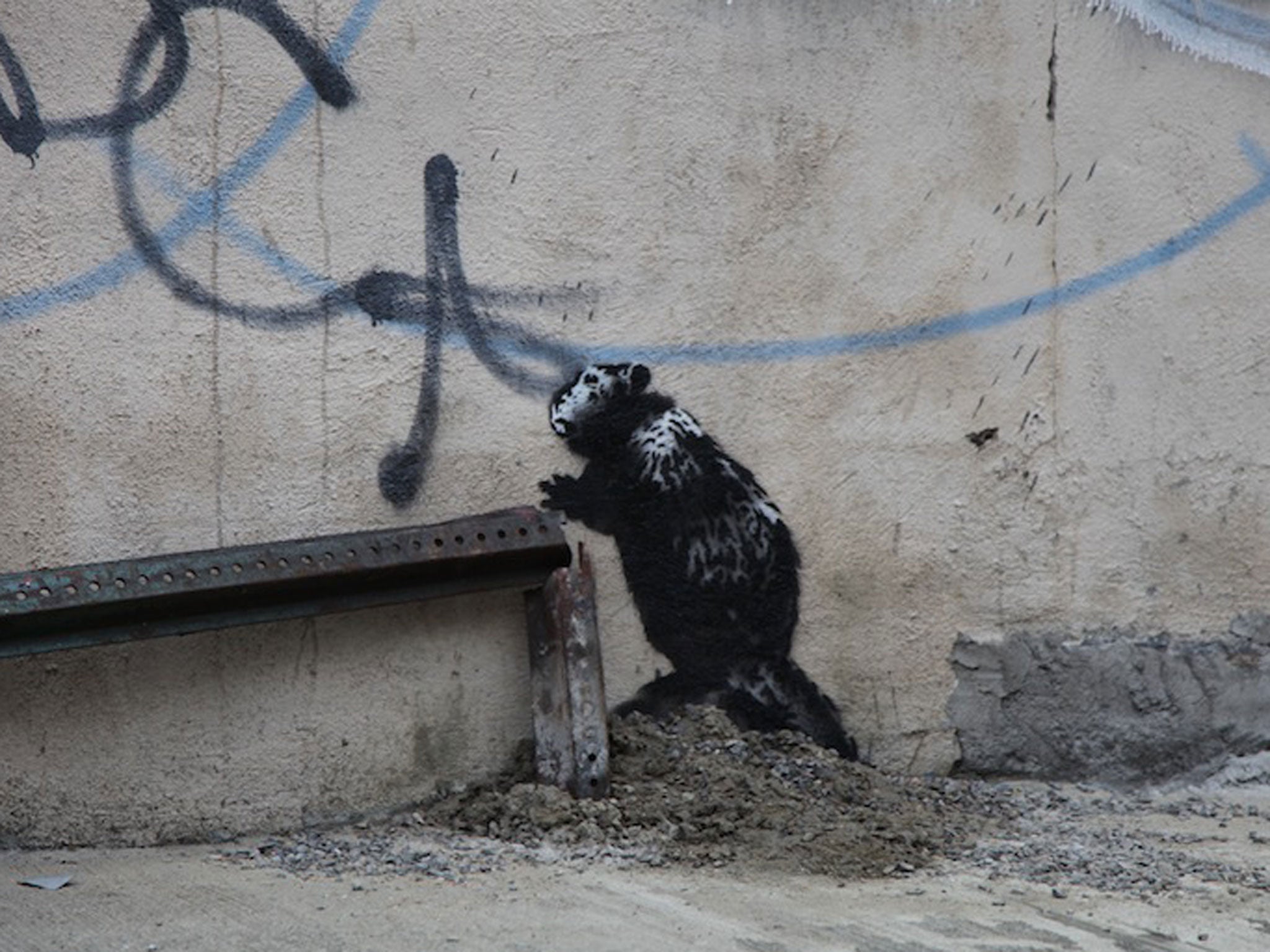Banksy’s lost his anonymity, and with it, his credibility
New Yorkers are charging tourists $20 to view a new Banksy work - but the Bristolian street artist commoditised himself long ago anyway

Your support helps us to tell the story
From reproductive rights to climate change to Big Tech, The Independent is on the ground when the story is developing. Whether it's investigating the financials of Elon Musk's pro-Trump PAC or producing our latest documentary, 'The A Word', which shines a light on the American women fighting for reproductive rights, we know how important it is to parse out the facts from the messaging.
At such a critical moment in US history, we need reporters on the ground. Your donation allows us to keep sending journalists to speak to both sides of the story.
The Independent is trusted by Americans across the entire political spectrum. And unlike many other quality news outlets, we choose not to lock Americans out of our reporting and analysis with paywalls. We believe quality journalism should be available to everyone, paid for by those who can afford it.
Your support makes all the difference.The news that a gang of burly New Yorkers have been charging street-art aficionados $20 a pop to see a Banksy that recently appeared in their neighbourhood shouldn’t come as overly shocking news – especially following a spate of mysteriously disappearing works, which subsequently surface at international art auctions.
In contrast to these big-bucks ‘acquisitions’ by art dealers, though, there’s a quaintness to this local operation that lets it become more human, and less trite than the actual cartoon image stenciled onto the wall. While Banksy-lovers around the world probably dribbled their morning coffees in disgust, the story adds a rare element of local colour to a work by an artist who has, in recent years, become more and more divorced from the streets on which he paints.
Banksy is now a big-name brand, and, like any other successful purveyor of commodities, he (who could equally be a she) can be summed up with reference to his products (pictures that make you momentarily go “Oh yeah”), and his target market (people trying to look cool). This wasn’t always the case - in situ, and with the threat of erasure or over-painting, the momentary “Oh yeah” experience was a novelty; those seeing his work felt something personal and unexpected in a world where almost every image on the street is trying to sell you more schmutter. There was no brand, and no target market.
But now – and this is something that Banksy himself recognizes in his film, Exit Through The Gift Shop – endless press attention, reproductions of his work, and celebrity recognition have turned Banksy into a commodity to be sold to hipsters and hoorahs. He’s no longer a mysterious spray-can-in-the-night, and his work no longer belongs to Jane and Joe Bloggs of Everytown. The street-art mini-mafia that has popped up in New York shows that Banksy, as a brand, symbolizes something outside of their world – and that this symbol is so large and bright that it’s able to obstruct any sense or feeling that might arise from the work itself.
No-one can really say that Banksy is anonymous anymore: we might never find out his real name, and we might never see his face, but Banksy is now a celebrity like any other, and, like anyone who allows their public image to obscure their real work, has lost much of his credibility. Luckily, though, Banksy will always have an advantage over other celebrities: the power of metamorphosis, and a total re-brand. I hope, given the increasing commercialization of his work, that Banksy will use this soon, and that none of us will ever be any the wiser.
Join our commenting forum
Join thought-provoking conversations, follow other Independent readers and see their replies
Comments